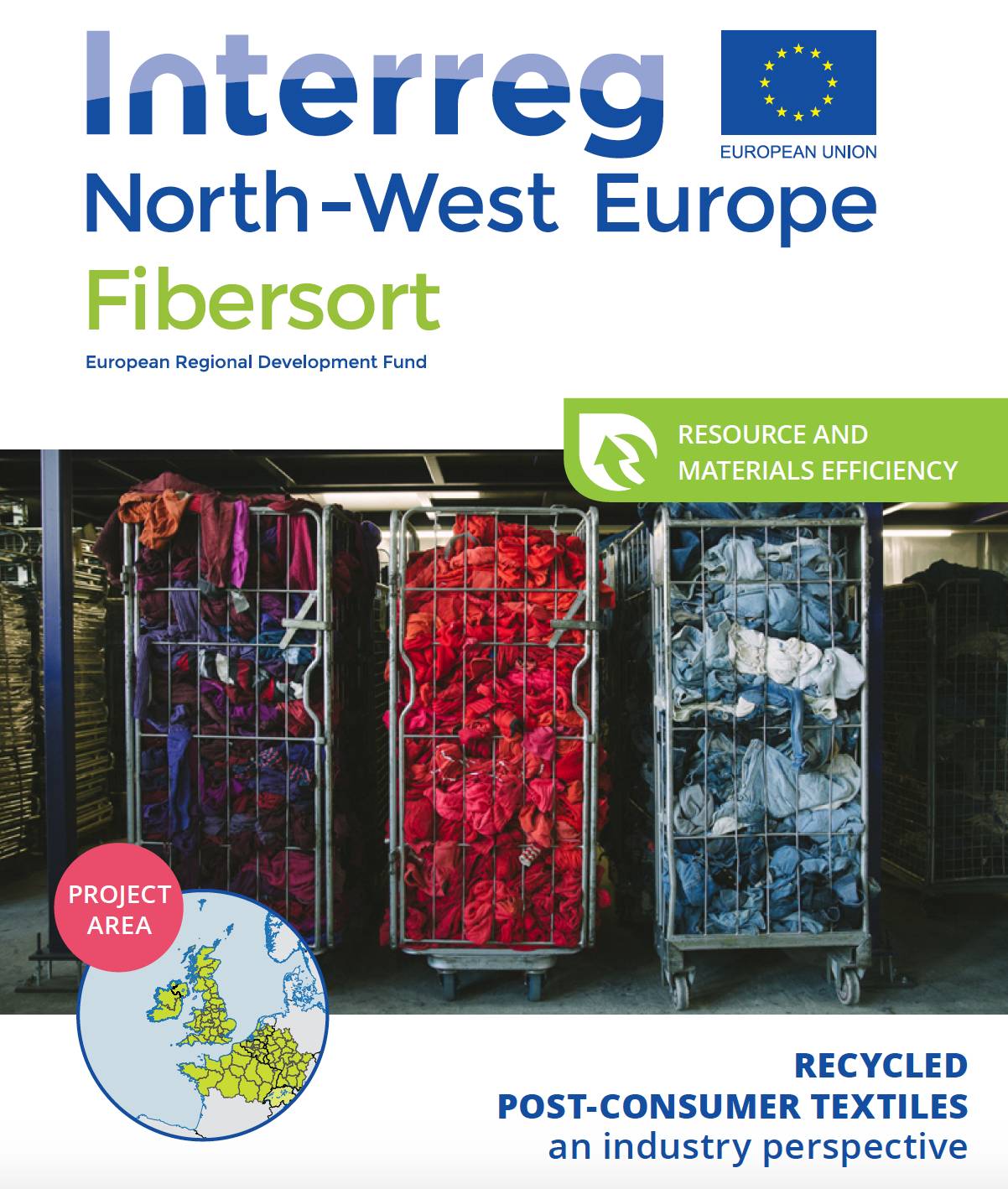
In Europe we are facing a growing mountain of used textiles. Latest research shows that in North-West Europe (NWE) 4,700 kilo tonnes of post-consumer textile waste (PCT) is generated annually. Still, less than 1% of textiles produced are currently recycled into new ones, and around half of them are being downcycled, incinerated or landfilled.
Automated sorting technologies could enable the industry to turn non-rewearable textiles that currently have no other destination than downcycling, landfill or incineration into valuable feedstock for high-value recycling. One of these technologies is the Fibersort, a Near Infrared (NIR) based technology able to categorise textiles based on their fibre composition, structure and colour. While the technology is promising, identified socio- cultural, physical, economic and regulatory barriers must first be overcome to ensure its successful implementation. In May 2019, the Fibersort Interreg NWE project published an overview of these potential barriers for the implementation of Fibersort technology for collectors and sorters. This overview reflected macro trends in textiles, and identified their implications for the importance, fit and potential of the Fibersort technology.
While currently post-consumer textiles are struggling to successfully find textile-to-textile recycling end-markets, this report explores existing and potential end-markets for PCT, sorted according to their characteristics, and assesses the potential of different business models for brands and manufacturers to successfully integrate the recycled textiles. The research builds on publicly available data of recyclers, manufacturers and brands, as well as primary insights gathered through a survey, interviews with recyclers, manufacturers and brands, as well as industry and academic experts.
At the end of each chapter, recommendations are formulated for recyclers, manufacturers and brands to address the barriers for uptake of sorted textiles identified throughout this project:
- Making recycled the new norm: exploring socio-cultural barriers
- Creating new materials from post-consumer textiles: overcoming physical barriers
- Making recycling a sound business choice: reducing economic barriers
A table at the end of the report summarises key findings and recommendations emerging from this publication.


